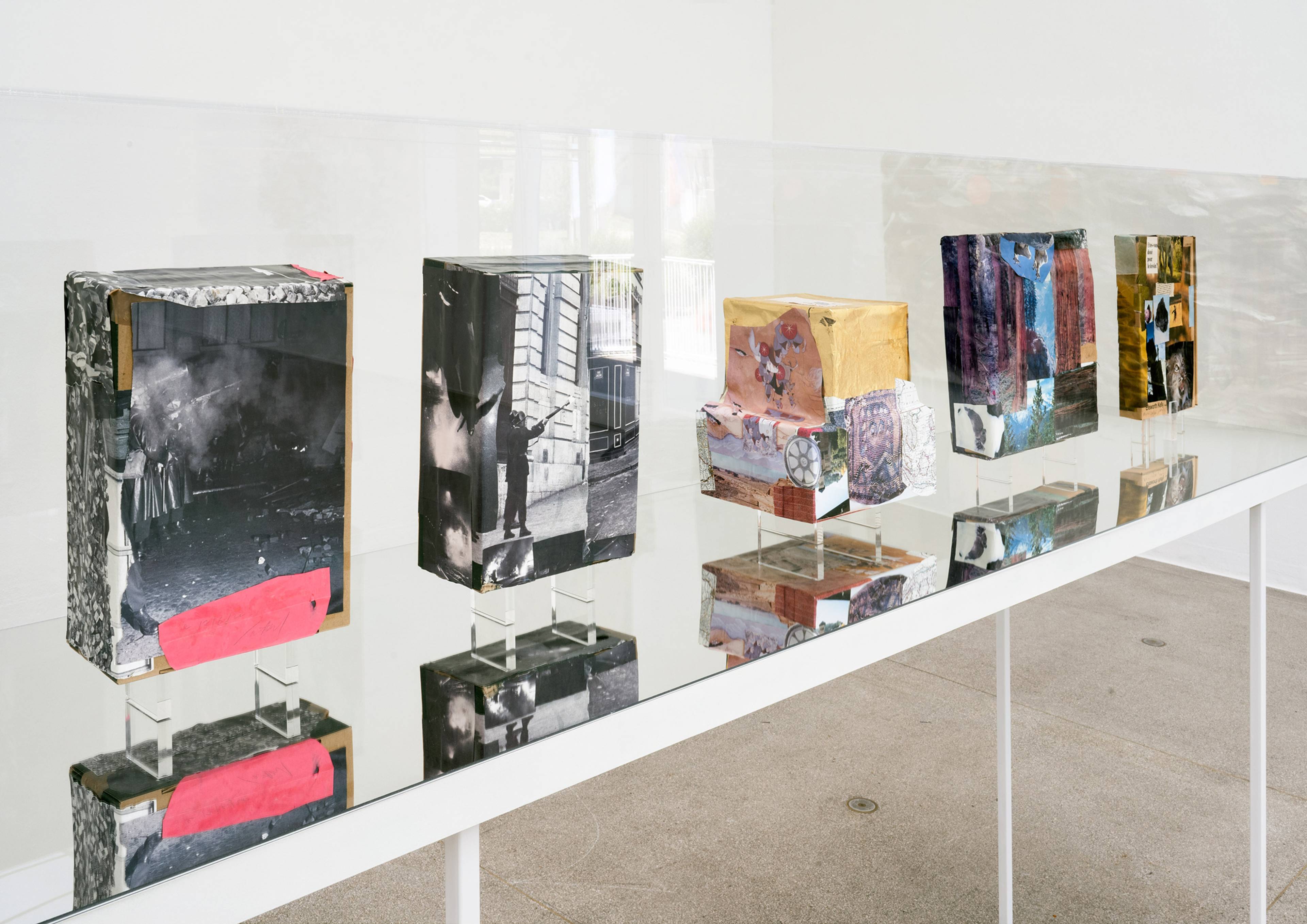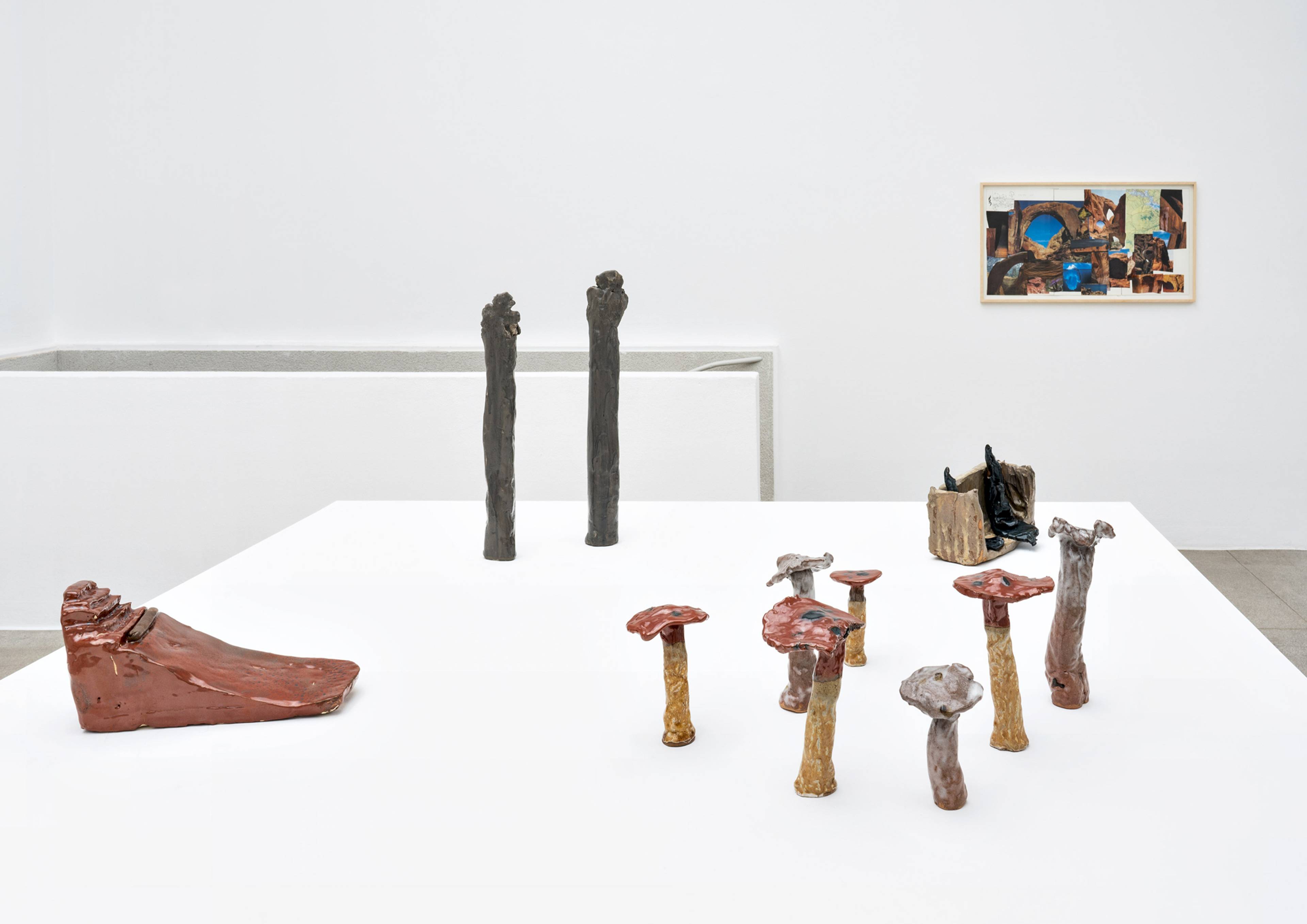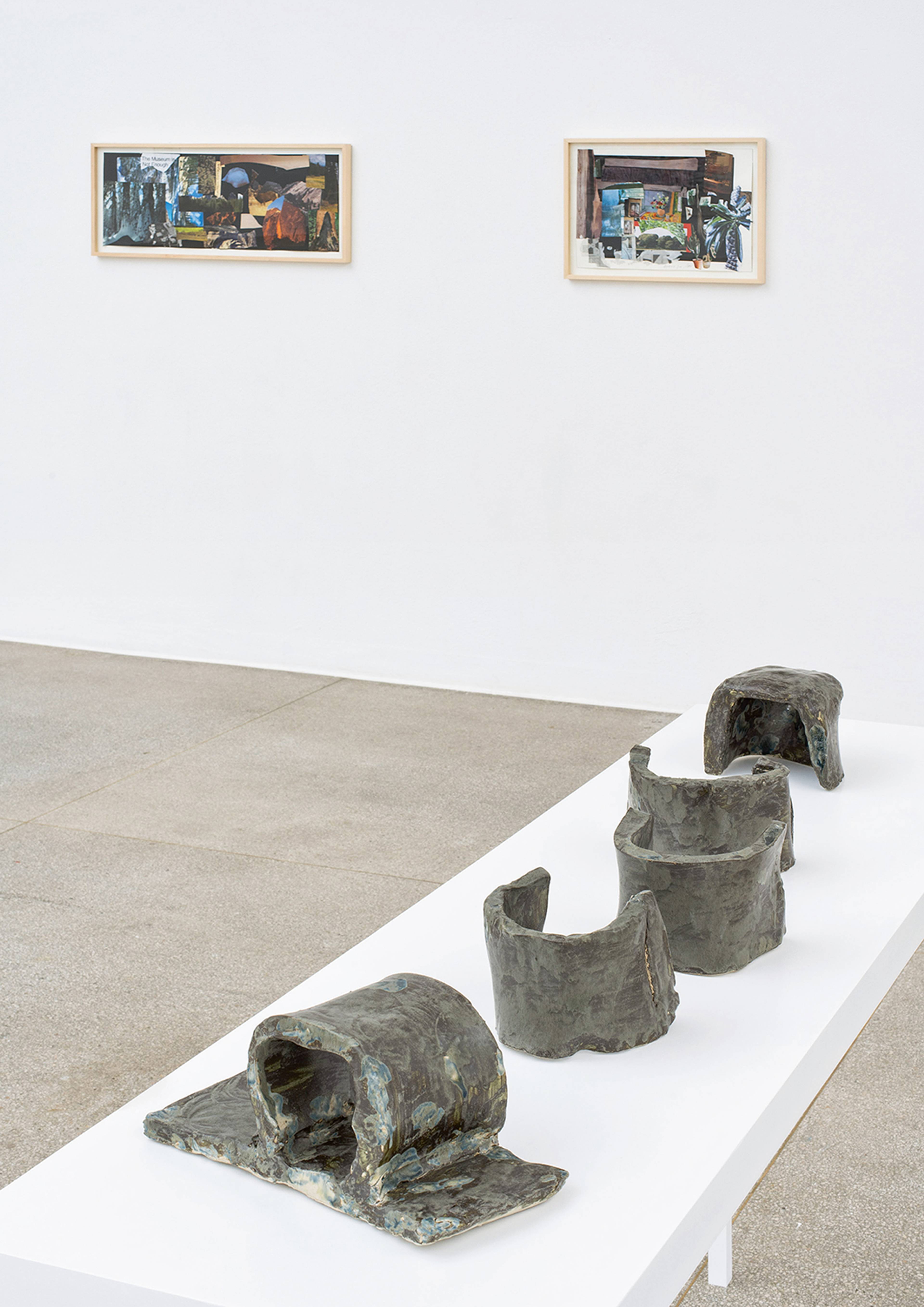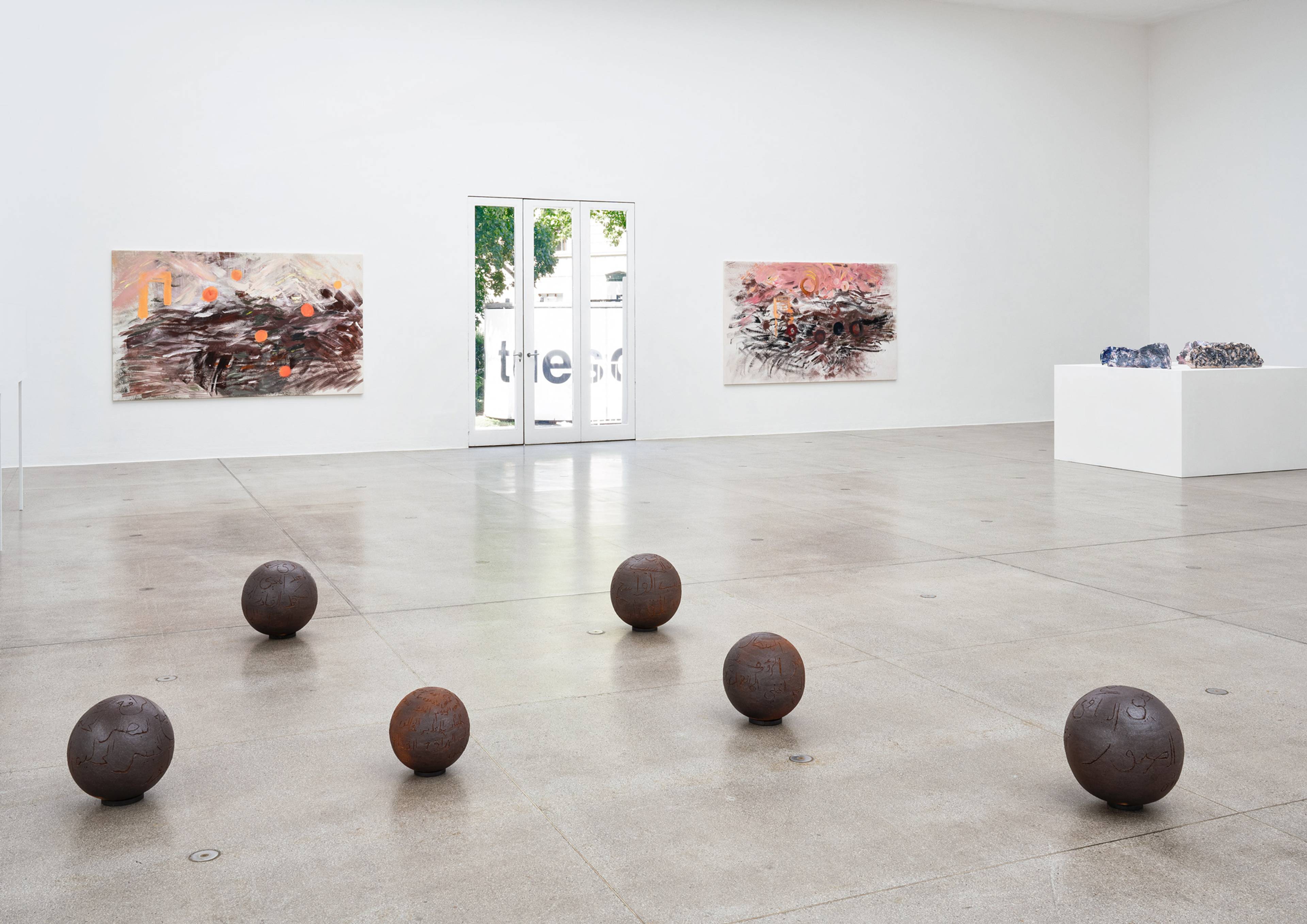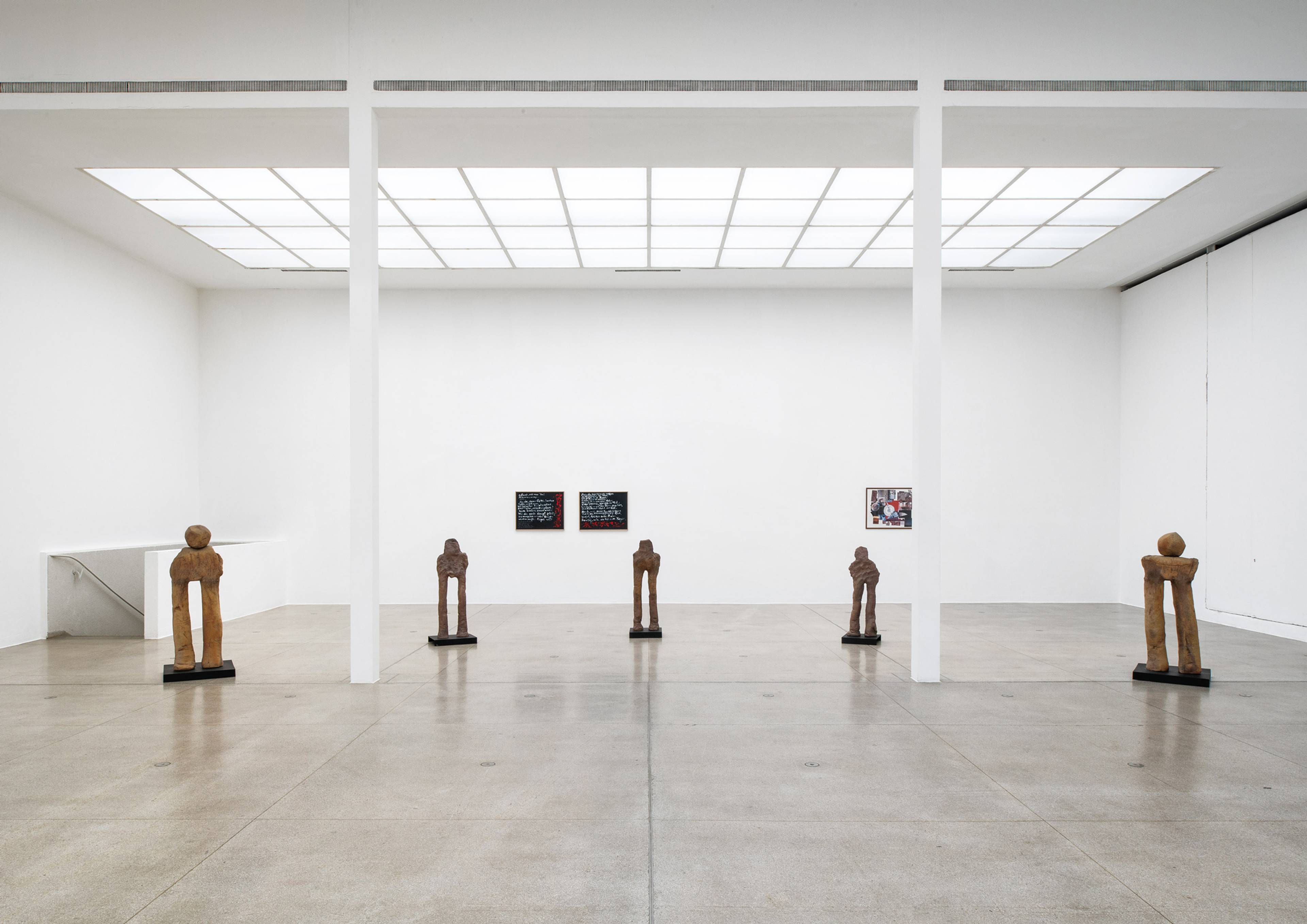In the beginning, there was fire and there was clay. Hands molded the clay and set it to fire to make forms. The hollow vessels begat various implements for agriculture, storage, ceremonial use, and, most importantly, record-keeping in the burgeoning city-states. Mathematics and writing were established through cuneiform markings on flat tablets. It was the dawn of civilization, Sumer, third millennium BCE. For Simone Fattal (*1942), that formative epoch still resonates in the present day. Her diverse use of media is a poetics of material as much as it is autobiographical, clay being her main metier, collage driving her narrative, and text the recollection of her imagination.
One can read Fattal’s lapidary art like tea leaves clustered at the bottom of an emptied cup, the ebb and flow of her long, peripatetic life embedded as vestiges of memory. The content in her collages is urbane, elliptic, and subtle, its leitmotifs maps and language. German, English, French, and Arabic appear as markers of place and time. The result is a kind of elaborate diary on multiple continents, from the Levant to old Europe and the American West, where she lived and published books in the 1980s, the richness of her cosmopolitan world reflected in her editorial choices.
The dynamic collage Music (2009) juxtaposes an antique, patterned, ceremonial garment with Issey Miyake’s famous pleated black dress, a personal invite to one of the designer’s Paris shows discreetly placed. And, like the garments, Fattal plays with decorative pattern and repetition, including a tiled mosque in the juxtaposition, suggesting that she engages in the secular and religious worlds with equal ardor.
In Avec les temps l’argent n’a plus de valeur (With Time, Money Loses Its Value, 2020), we see a text snippet by the experimental poet Henri Michaux; reproductions of Picasso’s black-and-white Don Quixote illustrations (1955); a quote from ascetic mathematician Blaise Pascal; maps of the Mediterranean, Geneva, and Northern Europe; a note written in French on Hotel Stationary from Sloane Square, London; a sliver of hyper-inflated Lebanese currency; and a quote from Virgil’s Eclogues (42–37 BCE). Fattal’s expansive mind and literary syllabus reveals an artist who equalizes the classical with the avant-garde. It’s the recurrence of such unexpected confluences in her collages that gives her such depth as an artist. It sure isn’t about the money.
If Fattal casts a wide net of correspondences, everything eventually circles back to forms and ruins of the ancient world. Her collages are not cheapened analogs, but paeans to a trove of printed media shaped into forms, themselves both vessels and their contents, here pieced together like cut gemstones on an exquisite, velvet-covered table.
Fattal’s three-dimensional works are given lots of room to breathe. A series of nine glazed-ceramic formations atop high white pedestals appear like geological structures (“Cloud,” 2023) and echo the painter John Constable’s own cloud studies, done in pearlescent baby blues, cherubic soft pinks, and tints of deep violet. On another pedestal are found seven Mushrooms (2018), a pair of figurines (Couple, 2002), and the lone Temple (2022), which relates to the stepped design of the obsolescent Sumerian ziggurat. Further towards a memory of rugged, mountainous landscape are two large-scale, horizontal abstract paintings, Sitter 1 and Sitter 2 (both 2023), their sedimentary, earthy browns done in broad, rapid brushstrokes and contrasted by bolts of pastel colors.
Ultimately, what gives the exhibition a subtle thrill are the major sculptures found in two powerful works. The 99 Names (2020) is a group of six exceptional stonewares with Arabic inscribed into their surfaces, their spherical shapes examples of perfect forms with no beginning and no end. Meanwhile, armless and hauntingly rudimentary, the five figures of “Guerrier” (Warrior, 2008) speak to what is primeval in all cultures, their noble, art-brut forms bordering on human abstraction. Standing like the faceless players of an archaic theater in an archeological dig, they distill the monumental artifacts she’s absorbed into her sculptural nomenclature.
Fattal’s “metaphorS” is just that: a contemporary allegory woven through constellations of autobiography, geography, anthropology, and the written word. Fattal has it all there, and that is no small feat. All of her twists of media have literary panache as much as art-historical lucidity, her sense of poetics grounded by potent, gracefully reposed objects. In our present age, with all of its distortions, we often forget where things originate. With the rare gift of discernment and the refinement of a worldly mind, Fattal invites us into her fabulist world, rooted at the fount of knowledge and wisdom. And that makes for eternal life.
___
“metaphorS”
Secession, Vienna
21 Jun – 8 Sep 2024


